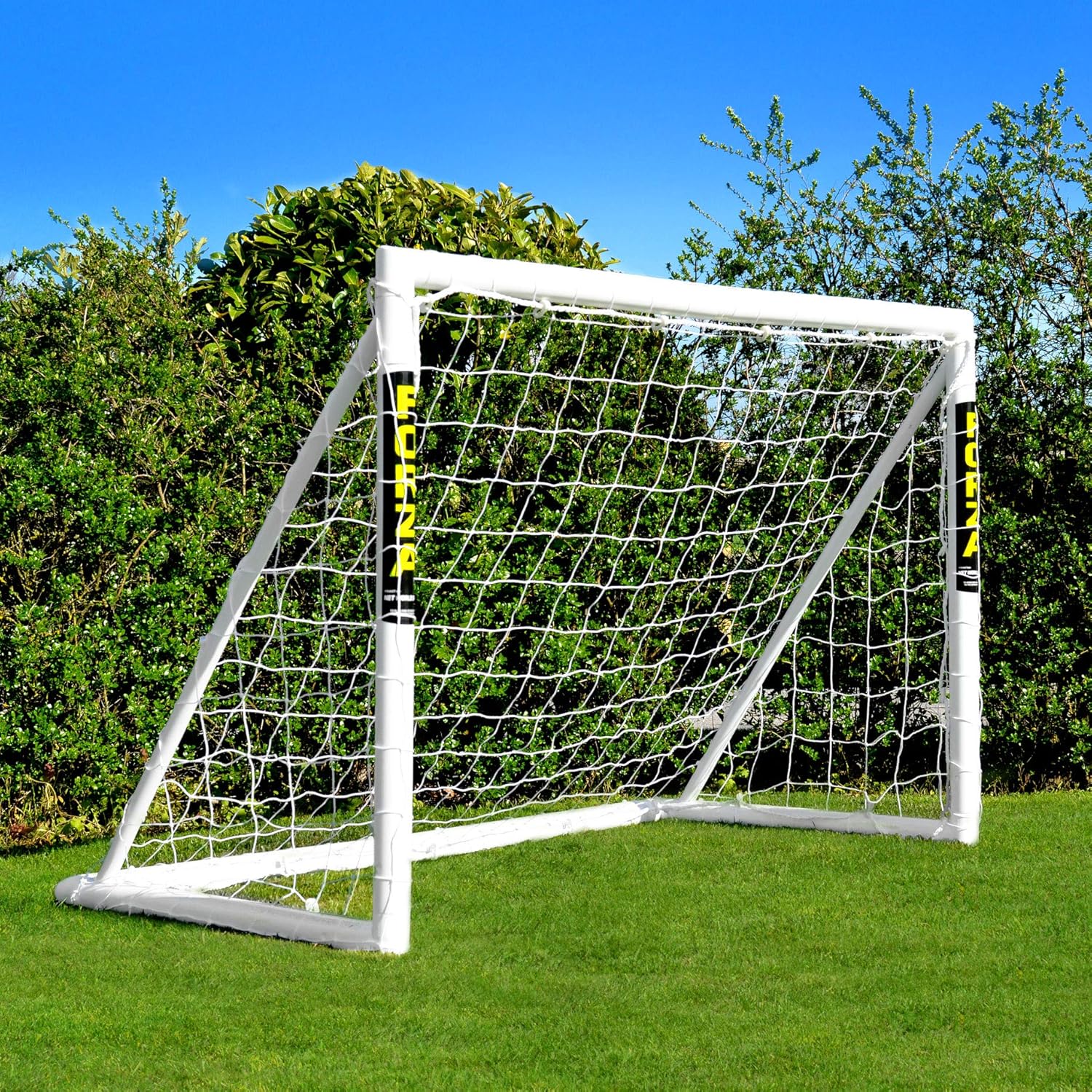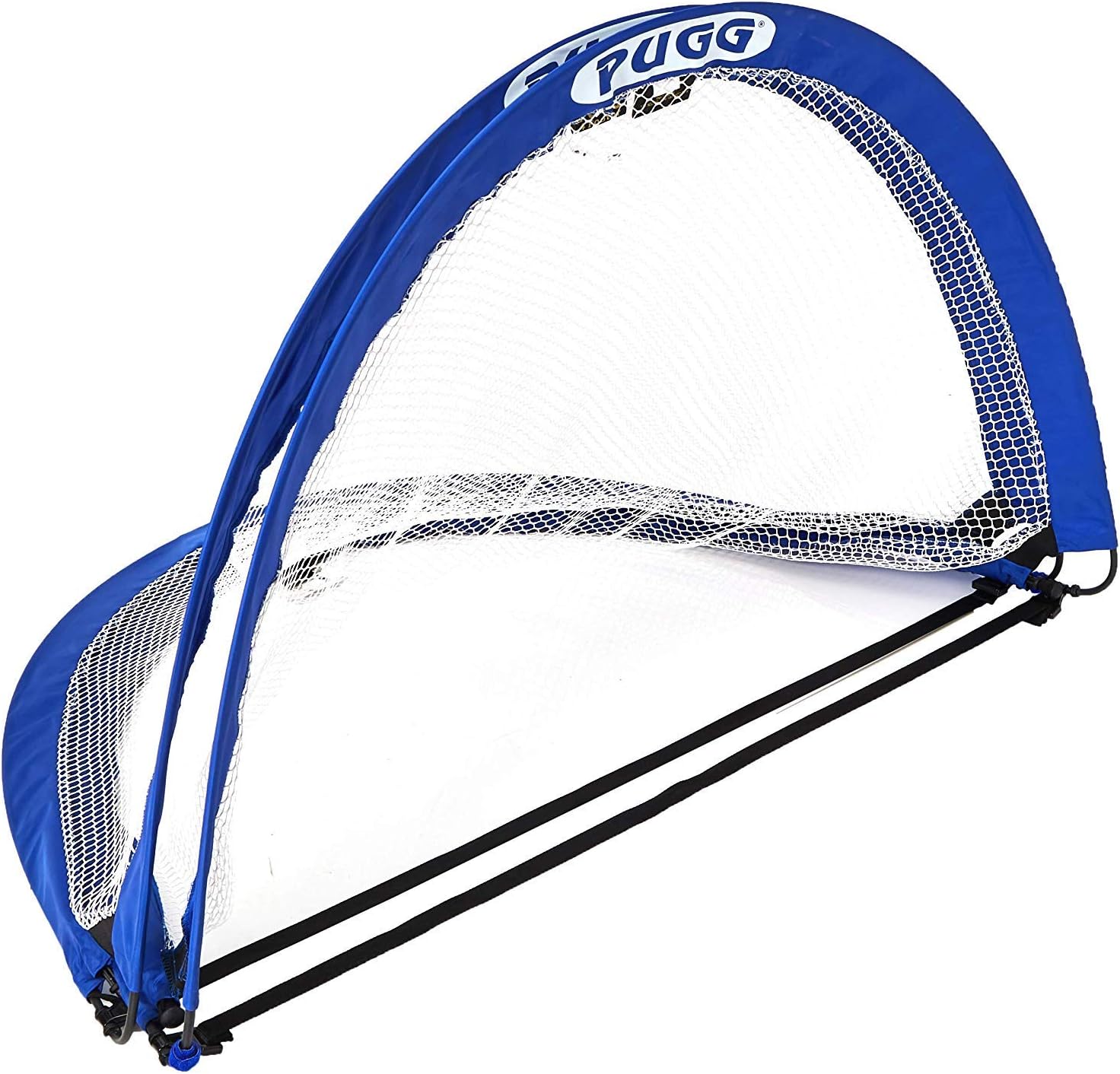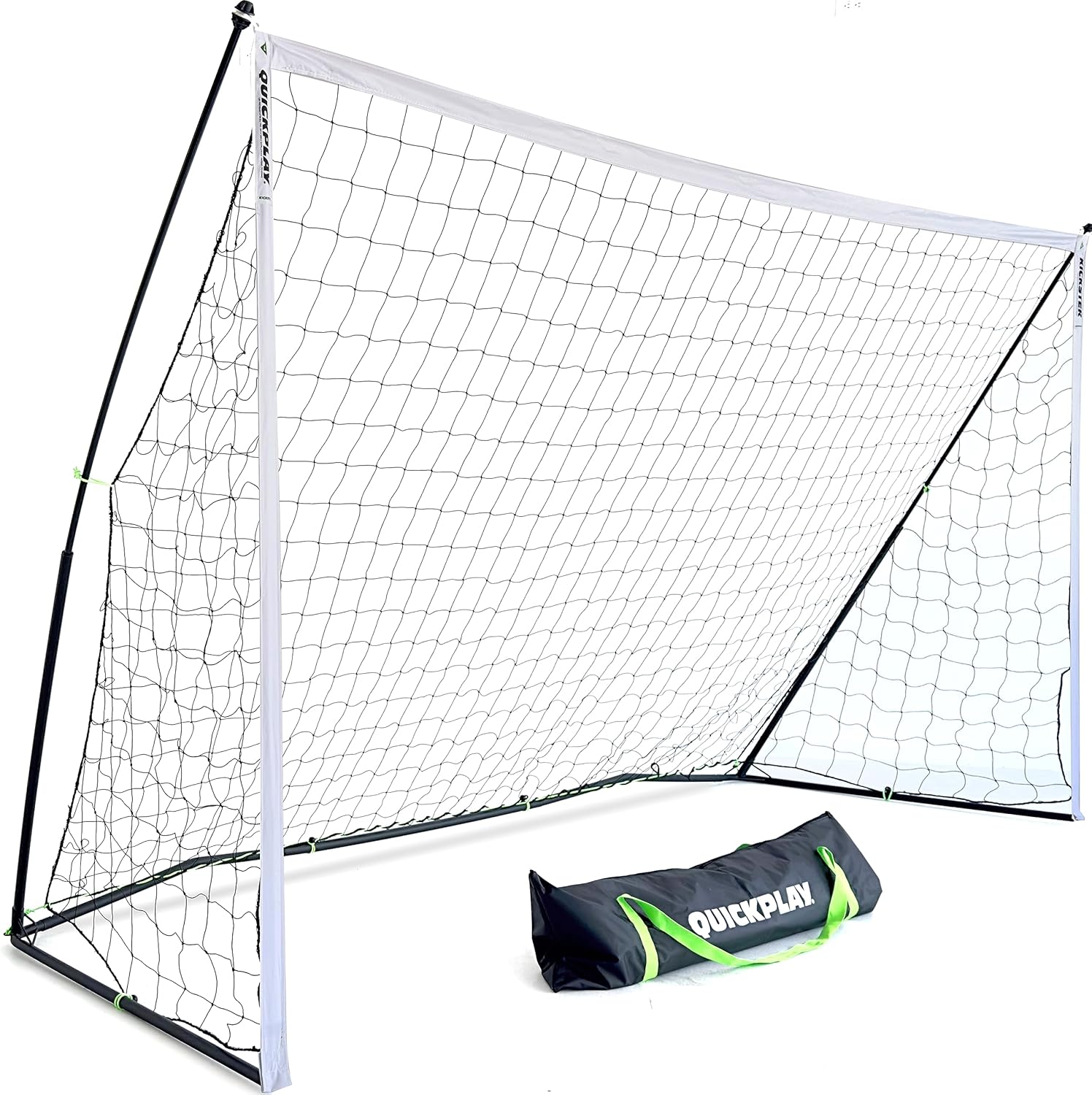Children’s soccer goals are specially designed equipment tailored to ignite the passion for football in young kids while facilitating their skill development in a secure environment. These goals serve as the backbone of children’s soccer training sessions, games, and mini-matches, accommodating the unique needs and physical capabilities of younger players.

Characteristic
Portability and Convenience: One of the key features of children’s soccer goals is their portability. Constructed from lightweight materials, these goals are easy to transport and set up without requiring specialized tools. This design allows for quick assembly and disassembly, making them ideal for use in various locations, from school playgrounds to backyard gatherings. Their ease of mobility ensures that the fun and learning can happen anywhere, anytime.

Stability and Safety: Despite their lightweight nature, children’s soccer goals are engineered for stability. Many models come equipped with weighted bases or anchoring systems that prevent the goals from tipping or shifting during gameplay, ensuring a steady and secure structure. Safety is paramount, with padded frames and soft edges on the posts and crossbars to minimize the risk of injury in case of accidental collisions. The dimensions, typically ranging from 1.5 to 3 meters in width and 1 to 2 meters in height, are carefully calibrated to suit the size and age of children, promoting both fair play and a safe playing environment.
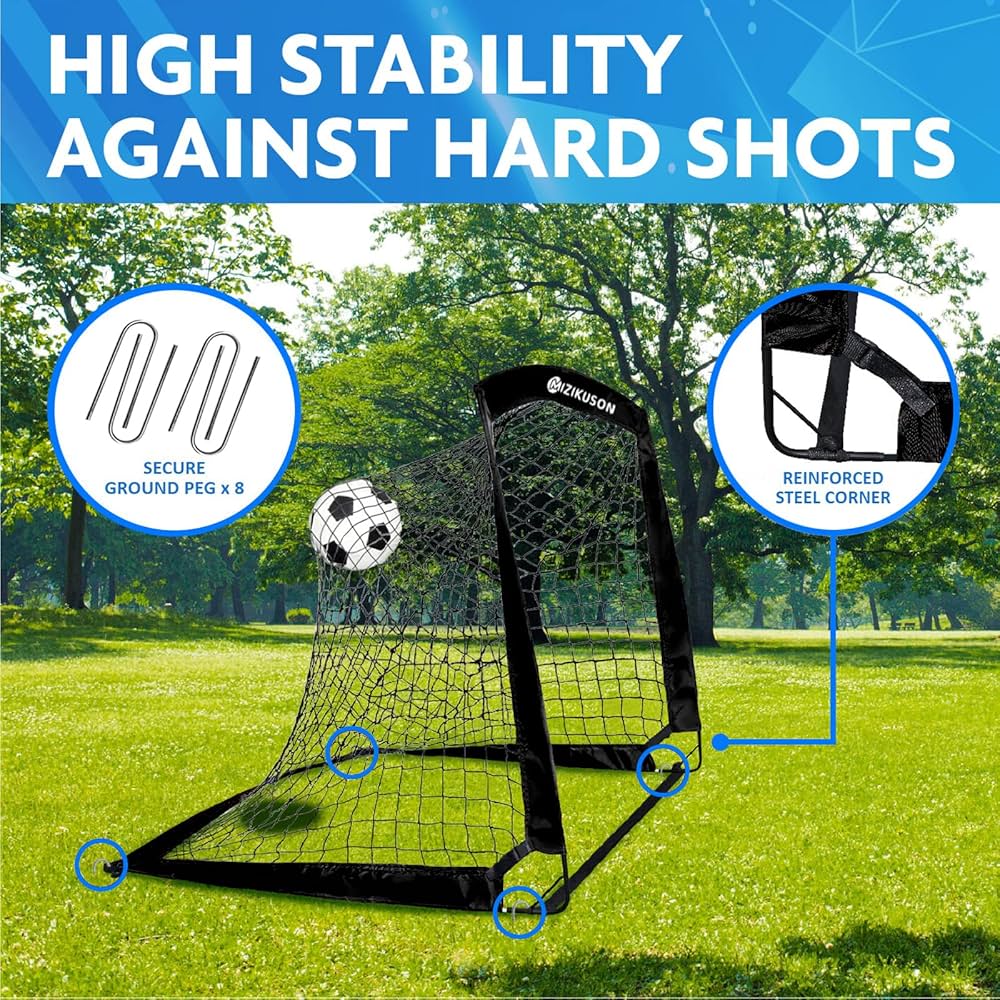
Durability and Longevity: Quality children’s soccer goals are built to last. Made from durable materials, they can withstand the rigors of frequent use and repeated assembly/disassembly. The nets attached to these goals are also designed for endurance, capable of enduring countless shots without tearing. This robustness guarantees that the goals will remain a reliable companion throughout a child’s soccer journey.
Maintenance and Care
Maintaining and caring for kids’ soccer goals is essential to ensure their longevity, performance, and the safety of the children using them. Here are some comprehensive guidelines for proper maintenance and care:
Regular Cleaning: Keeping the soccer goals clean is the first step in maintenance. After each use, use a soft cloth or sponge to wipe away dirt and stains from the surface. For a more thorough cleaning, periodically (such as monthly or quarterly), employ gentle cleaners and a soft brush to clean hard-to-reach areas like the posts, crossbars, and netting. This prevents the accumulation of dirt and grime, which can degrade the material over time.
Inspection and Tightening: Regular inspections are crucial for maintaining the structural integrity of the soccer goals. Before and after each use, check all components, including posts, crossbars, and netting, to ensure they are securely connected. If any screws or bolts are loose, tighten them promptly using appropriate tools to prevent wobbling or detachment during play.
Replacement of Worn Parts: The netting is particularly susceptible to wear and tear. Inspect it regularly for holes, fraying, or stretching, and replace it immediately if damaged. Similarly, if any other parts, such as posts or crossbars, show signs of significant wear or damage, they should be replaced to maintain the overall stability and safety of the goal.
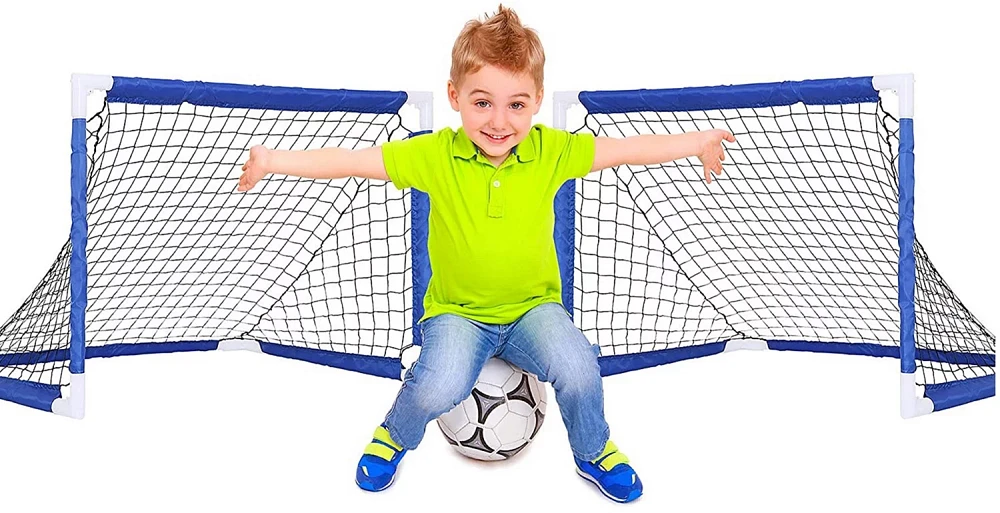
Proper Storage and Protection: When not in use, store the soccer goals in a dry, well-ventilated area. Prolonged exposure to moisture or direct sunlight can cause rusting, warping, or fading. Consider using protective covers to shield the goals from dust and debris, especially if they will be stored for an extended period.
Adherence to Usage Instructions: Following the manufacturer’s instructions for use is vital. Avoid overloading the goals beyond their recommended weight capacity or using them in ways not intended, as this can lead to damage. Additionally, educate children on safe play practices around the goals to prevent accidental damage or injury.
Professional Maintenance Services: For high-end or large soccer goals, consider engaging professional maintenance services periodically. These services typically include a comprehensive inspection, cleaning, lubrication of moving parts (if any), and tightening of all connections. Professional maintenance ensures that the goals remain in optimal condition and function safely.
How To Practise With Kid’s Score Goals?
Practicing with kids using soccer goals can be an enjoyable and effective way to develop essential soccer skills. Start by focusing on basic shooting drills where the child can practice accuracy by aiming for different parts of the goal, using both feet. You can set up cones for dribbling drills, encouraging them to weave through the cones and shoot when they reach the end. As they improve, increase the distance from the goal and introduce time challenges to build speed and control. Incorporating 1-on-1 drills, where a parent or guardian acts as the goalkeeper, adds a competitive edge, teaching them to shoot under pressure.

To work on accuracy, you can mark specific areas of the goal as targets and assign point values to make target practice more engaging. Rebound drills, using a wall or rebound net, can help develop quick reactions and first-touch shooting.
Penalty shootouts are a fun way to practice composure in high-pressure situations. You can also enhance control by passing the ball to them and encouraging two-touch shooting, where they control with one touch and shoot with the next.
To simulate game-like scenarios, practice crossing and finishing drills, where the child meets a crossed ball from the wing and shoots. Adding agility exercises before finishing helps improve their ability to shoot while tired.
Lastly, small-sided games or mini-matches, such as 2-on-2 or 3-on-3 scrimmages, provide a fun, competitive environment that allows for more frequent shooting opportunities. By mixing these drills and activities, kids can improve their soccer abilities while staying motivated and enjoying the game.
What Brand Of Kids Soccer Goals Is Good?
1. SKLZ
It is known for its quick setup and portability, SKLZ soccer goals are made with durable materials. They usually come in pop-up styles, perfect for easy transportation and practice on the go.It is best for backyard games, parks, and practice.
2. Franklin Sports
It offers a range of sizes and types, from pop-up goals to more permanent ones with steel frames. Franklin goals are durable and budget-friendly, making them a popular option for kids.It is beginners and casual players.
3. PUGG
PUGG is famous for its pop-up goals. These are lightweight, easy to set up and take down, and perfect for small-sided games.It is best for small-sided games and practice sessions.
4. QuickPlay
It is known for durability, QuickPlay soccer goals are easy to assemble and come in various sizes. Some models are even designed for training specific skills like accuracy and power.It is best for regular use and skill development.
5. FORZA
FORZA offers a wide range of soccer goals, from pop-up versions to more permanent, steel-framed goals. They focus on high-quality materials and are well-regarded for their durability.It is best for regular training and backyard setups.
